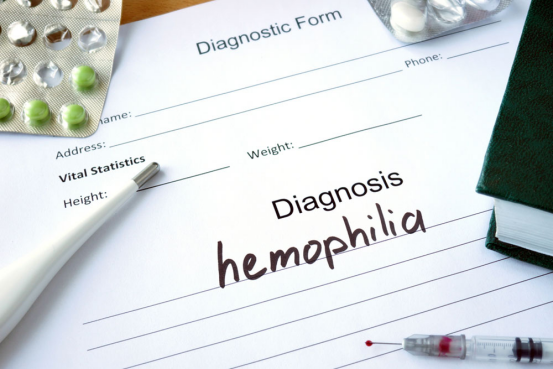Essential Facts About Hemophilia You Should Know
Hemophilia is a rare genetic disorder that impairs the blood’s ability to clot, leading to excessive and spontaneous bleeding. This condition primarily affects men and can cause serious health complications, including internal bleeding, joint damage, and in some cases, life-threatening conditions. The bleeding usually occurs in joints and muscles, and if left untreated, it can result in permanent damage.
Hemophilia is a rare genetic disorder that impairs the blood’s ability to clot, leading to excessive and spontaneous bleeding. This condition primarily affects men and can cause serious health complications, including internal bleeding, joint damage, and in some cases, life-threatening conditions. The bleeding usually occurs in joints and muscles, and if left untreated, it can result in permanent damage.

Understanding hemophilia is crucial for both patients and caregivers. Here are some key facts you need to know about this disorder:
1. Hemophilia Is Inherited and X-linked
Hemophilia is a genetic condition passed down through families. It is an X-linked recessive disorder, meaning it primarily affects males, as they have only one X chromosome. Females, with two X chromosomes, are typically carriers of the disorder but do not usually experience symptoms.
2. Hemophilia A and B
There are two main types of hemophilia:
- Hemophilia A: This is the most common form of hemophilia, caused by a deficiency in clotting factor VIII.
- Hemophilia B: Also known as Christmas disease, it occurs due to a lack of clotting factor IX.
Hemophilia B is rarer, but both forms cause similar symptoms, primarily spontaneous bleeding and excessive bruising.
3. Prevalence
It’s estimated that 1 in 45,000 males worldwide are born with hemophilia. Hemophilia B affects about 1 in 20,000 newborn males. The severity of the disease varies from person to person, with some experiencing only minor symptoms and others facing more severe complications.
4. Hemophilia C
Hemophilia C is a rarer and milder form of the disorder, caused by a deficiency of clotting factor XI. Unlike Hemophilia A and B, it is not X-linked and can affect both men and women. Treatment for hemophilia C is less widely available and often involves plasma infusions, especially in countries outside Europe.
5. Treatment Options
While there is no permanent cure for hemophilia, it can be managed with ongoing treatment. The most common treatments include:
- Clotting Factor Replacement: Regular infusions of clotting factor concentrate, either factor VIII for hemophilia A or factor IX for hemophilia B, are used to prevent or control bleeding episodes.
- Desmopressin (DDAVP): This medication can help treat mild cases of hemophilia A by stimulating the release of stored clotting factors.
- Plasma Infusions: For hemophilia C and in some cases of hemophilia B, plasma transfusions may be used to manage bleeding.
Treatment is typically ongoing and requires lifelong management, as there is currently no cure for hemophilia. Stopping treatment suddenly can lead to severe bleeding episodes.
6. Complications
Without proper treatment, hemophilia can lead to serious complications such as:
- Joint Damage: Repeated internal bleeding into joints can cause pain, swelling, and long-term joint damage.
- Internal Bleeding: Bleeding in internal organs or tissues can be life-threatening if not treated promptly.
- Neurological Complications: Bleeding in the brain, though rare, can lead to neurological symptoms and potentially fatal outcomes.
7. Diagnosis
Hemophilia is diagnosed through blood tests that measure the levels of clotting factors in the blood. Early diagnosis, typically before the age of 9 months, can help begin treatment and manage symptoms more effectively.
8. Home Care and Lifestyle Adjustments
While medical treatment is essential, lifestyle adjustments can also help manage hemophilia:
- Exercise: Gentle physical activity can help maintain joint health and flexibility, though high-impact sports should be avoided to prevent injury.
- Avoiding Blood Thinners: Certain medications, including painkillers and blood thinners, should be avoided as they can exacerbate bleeding.
- Pain Management: Over-the-counter pain medications like aspirin should be avoided. Instead, alternatives such as acetaminophen may be recommended for pain relief.
9. Genetic Counseling and Prevention
Since hemophilia is genetic, genetic counseling is recommended for families with a history of the disorder. While prenatal testing can sometimes detect hemophilia in a fetus, there are currently no preventive measures other than genetic screening before pregnancy.
Conclusion
Hemophilia is a serious condition that requires ongoing treatment and management, but with proper care, individuals with hemophilia can lead relatively normal lives. Understanding the condition, recognizing the symptoms early, and adhering to treatment plans are vital steps in managing hemophilia effectively. If you or a loved one is affected by hemophilia, it is important to work closely with healthcare professionals to develop a comprehensive treatment plan tailored to individual needs.